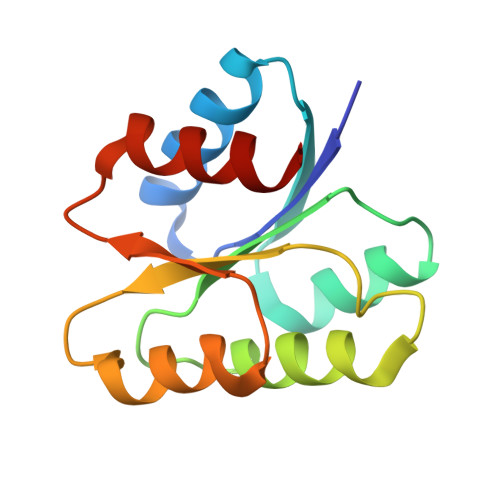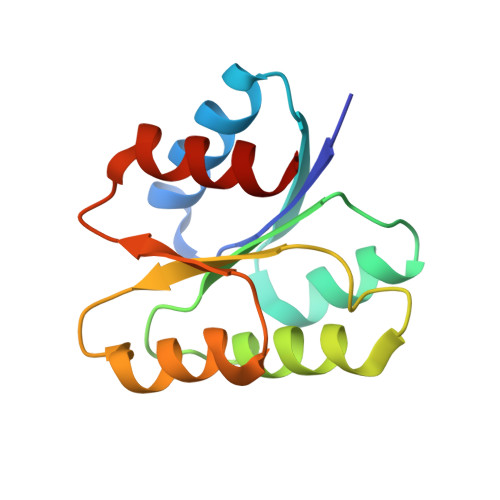Structural Insight into Partner Specificity and Phosphoryl Transfer in Two-Component Signal Transduction.
Casino, P., Rubio, V., Marina, A.(2009) Cell 139: 1-12
- PubMed: 19800110
- DOI: https://doi.org/10.1016/j.cell.2009.08.032
- Primary Citation of Related Structures:
3DGE, 3DGF, 3GL9 - PubMed Abstract:
The chief mechanism used by bacteria for sensing their environment is based on two conserved proteins: a sensor histidine kinase (HK) and an effector response regulator (RR). The signal transduction process involves highly conserved domains of both proteins that mediate autokinase, phosphotransfer, and phosphatase activities whose output is a finely tuned RR phosphorylation level. Here, we report the structure of the complex between the entire cytoplasmic portion of Thermotoga maritima class I HK853 and its cognate, RR468, as well as the structure of the isolated RR468, both free and BeF(3)(-) bound. Our results provide insight into partner specificity in two-component systems, recognition of the phosphorylation state of each partner, and the catalytic mechanism of the phosphatase reaction. Biochemical analysis shows that the HK853-catalyzed autokinase reaction proceeds by a cis autophosphorylation mechanism within the HK subunit. The results suggest a model for the signal transduction mechanism in two-component systems.
Organizational Affiliation:
Instituto de Biomedicina de Valencia-Consejo Superior de Investigaciones Científicas (IBV-CSIC) and Centro de Investigación Biomédica en Red de Enfermedades Raras (CIBERER), Jaume Roig 11, 46010 Valencia, Spain.
















